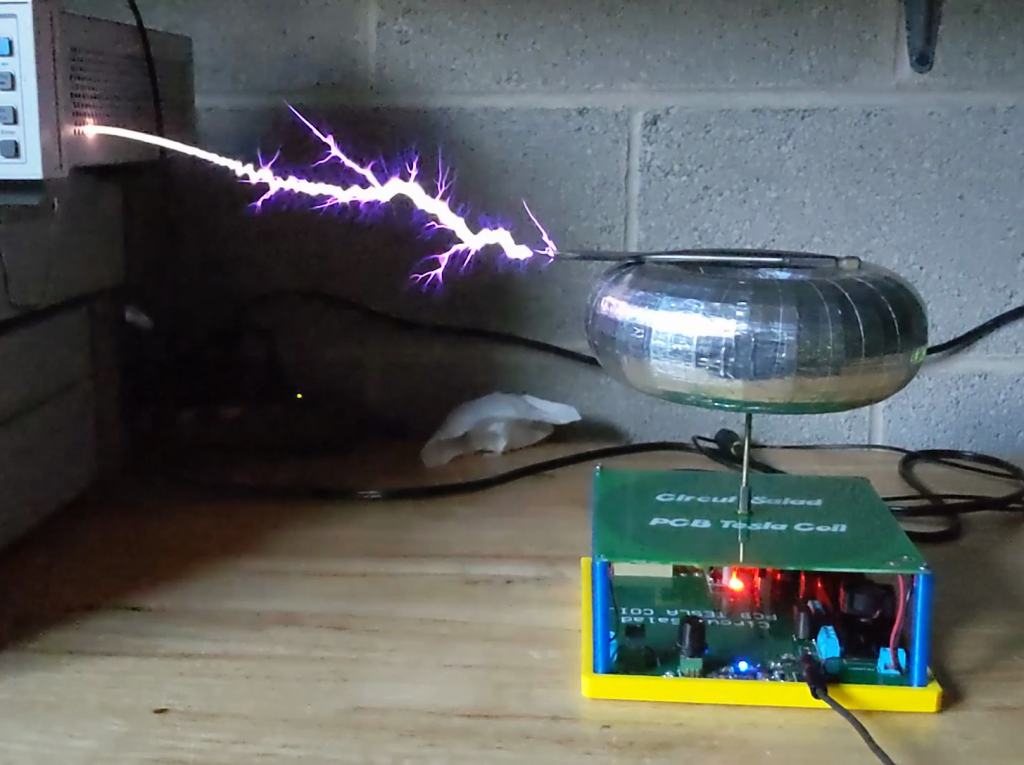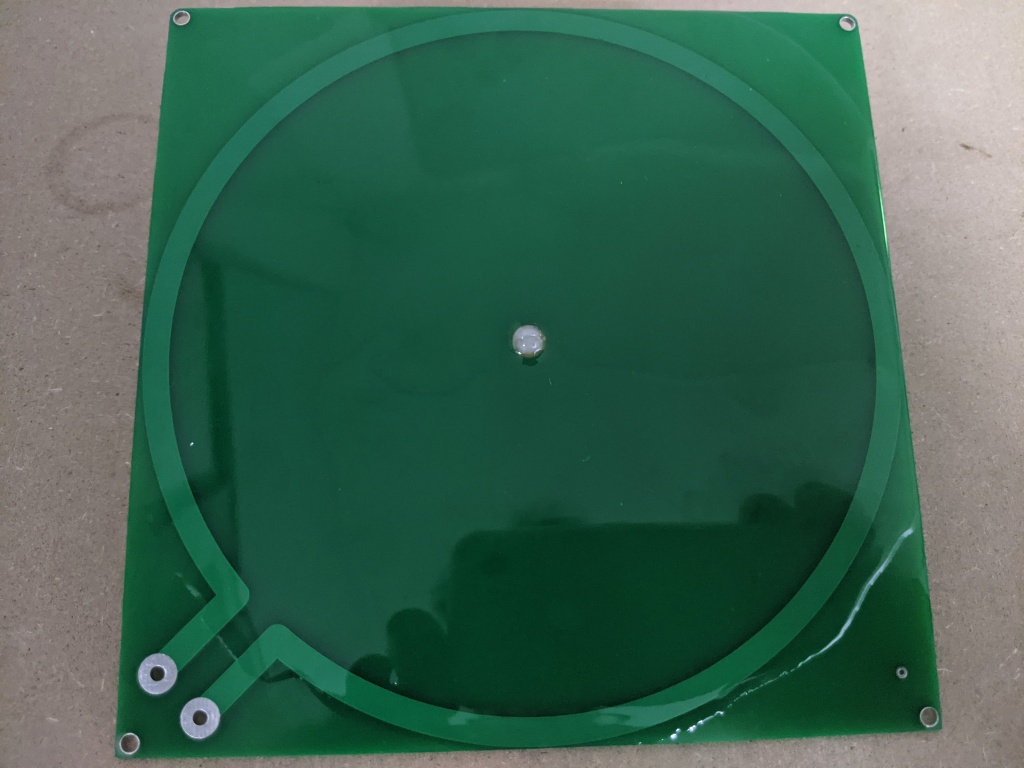


I have seen a number of low output PCB etched spiral Tesla coils on YouTube and wondered if the they could be driven to produce the larger outputs of traditional cylindrical coils. After designing my McTesla Tesla coil, I decided to try driving a PCB etched coil with my non resonant half bridge driver circuit. I first etched my own home brew coil which was 150 turns with an 8 mil trace spaced 8 mils. This worked with modest output but the frequency was higher than I desired at more than 2 MHz. So I broke down and had a commercially etched board made which was 6 inches square and has about 240 turns with a 6mil trace spaced 6 mils.
This coil performs well and depending on your top load resonates at anywhere from 900 kHz to 1.2 Mhz. The driver circuit is essentially the same as in my other designs. There are minor tweaks of the phase shifting network in the feedback path because of the higher frequency but everything else is the same. My top load is a 3D printed toroid which was wrapped in aluminum tape. The primary is one turn of etched on the bottom layer. Though the coil works quite well, it has to be carefully structured to avoid inter coil arching and breakdown.
My other coil designs utilizing this half bridge driver can achieve 9-10″ streamers. Surprisingly, the PCB etched coil can produce 12 inch streamers. To achieve such high output without the coil breaking down; I had to encapsulate the secondary in two part epoxy compound. Also the center post, connected to terminal, is screwed down to the secondary center with a nylon screw. A brass washer soldered to the center is the secondary output connection. There can be no metal screw passing through the PCB or it will fail to the primary or arc across the secondary on the top. Two part electrical potting compound works well to protect the coil and is easy to apply. It will harden in about an hour in a warm oven (170F). Both the top and bottom are potted. This coil uses the same interrupter circuit as the McTesla. The break out point is critical and the mosfets will immediately explode if the breakout point is not present. The breakout point can point up or to the side, but you have to be careful to make it extend an inch or more out from the terminal to provide adequate break out.

